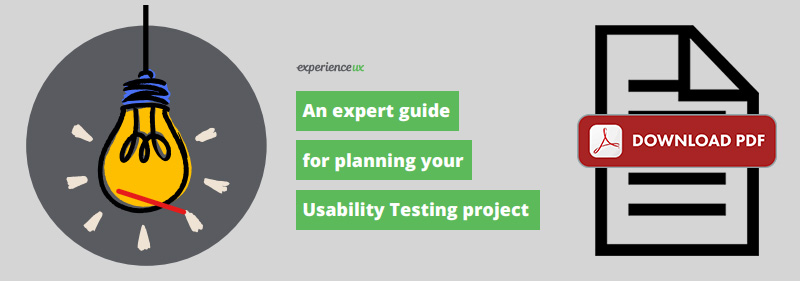It wouldn’t take me long to convince you of the benefits of usability testing with Experience UX, if you are not already aware. Just the fact that you will uncover usability issues by observing real users interact with your product, speaks for itself.
Whether it is navigation confusion, overwhelming content, unresponsive design or a convoluted form, we gain insights into your users’ behaviour allowing for informed decisions to be made quickly and in the right context. We observe patterns, preferences and expectations.
But what are some of the other advantages of regular usability testing for you and for your organisation?
Having worked with clients, regularly testing over a couple of years, here are my top three benefits of working closely and usability testing frequently:
1. Costly mistakes are avoided
Observing users on a regular basis means that changes will be made quickly based on real world issues observed. This approach of iterative testing, and continually actioning research recommendations, allows for validation and avoids worsening issues further down the line.
Tweaking or updating design or content early, before it becomes too embedded, will always be much more straightforward. Having a regular testing approach then means that all updates can be sense checked during the upcoming round of research, offering further reassurance.
When working on anything new then we always advise involving users early on in the process, ideally from the get-go(!), so that this perspective can feed into your designs/concepts and again avoid any mistakes. Then keep this going with repeat testing to ensure that the vision comes to life as needed.
Regularly incorporating user feedback and listening to their needs keeps a business grounded. Running regular usability testing offers planned research slots in the dairy which colleagues can tap into to observe user feedback live and in action. We have seen just how powerful this can be for encouraging a user-centred culture within many successful organisations.
2. Time and effort efficiencies
By embedding a repeat process, we see time and effort saving advantages for you and your team whilst building confidence in the live website, as it evolves and is tested over time. Advantages are experienced through ways of working, project administration and set up. Furthermore, we will have created the necessary materials, such as recruitment briefs and interview scripts. With repeat research we will not need to spend further time reviewing these details for each round. We can certainly see the benefits from our side too!
And additionally, we will naturally gain expertise with recruiting your audience the more that we do this, which is always beneficial for maintaining a high standard of research.
3. An extension to your team
When working with any agency the holy grail is to find a team that offers open communication and can be reached to talk through anything – when relaxed and free to tackle any subject together both parties really begin to feel like part of a joint team.
Working together to run regular research works best when your agency is open and honest, whilst genuinely listening. Whilst this should be the case for stand-alone projects, it is working regularly that builds a natural trust on both sides. This trust then translates into wider support and being able to lean on your research partner for additional input, internal meetings, and exploring longer term opportunities.
As a researcher there is a definite advantage when the wider team implicitly trusts the process, when I know, with full confidence, that we can quickly and smoothly transition our observations and user feedback, to produce actionable findings for you, to seeing them launched and then tested again. This is achievable by having an external perspective combined with being part of the wider team.
In summary, I have taken this opportunity to think through my top three benefits of running usability testing on a regular basis. If you are already benefiting from usability testing, it is now worth considering establishing a solid programme of regular testing, to allow you to observe your users frequently interacting with your digital product as it evolves.
Ultimately this is about delivering first-class user experience, and regular testing ensures you are ahead of the competition and keeping users engaged with your products and services.
Further reading:


